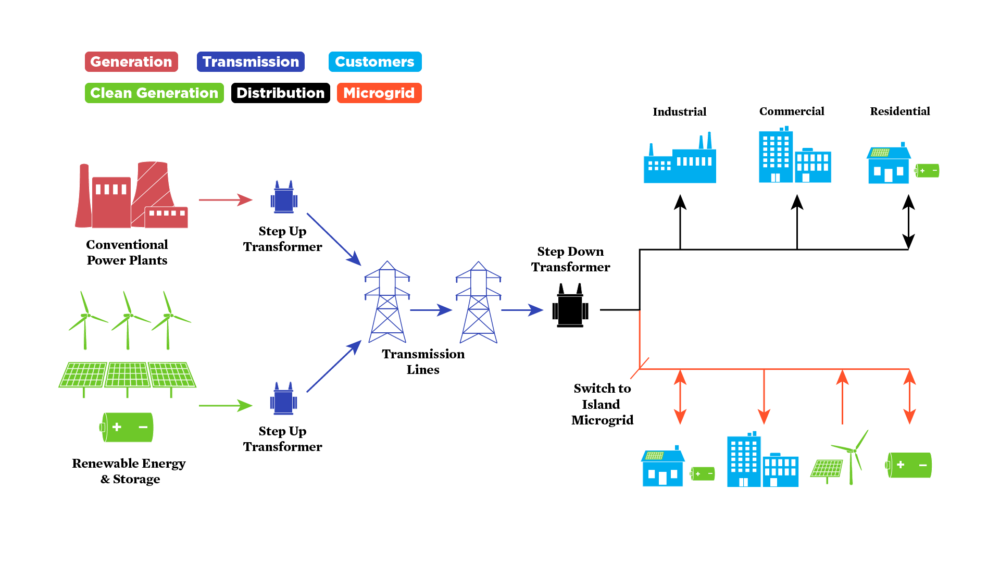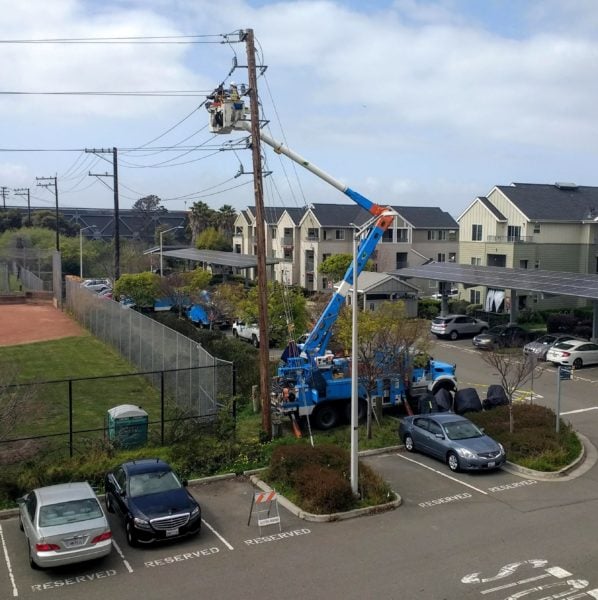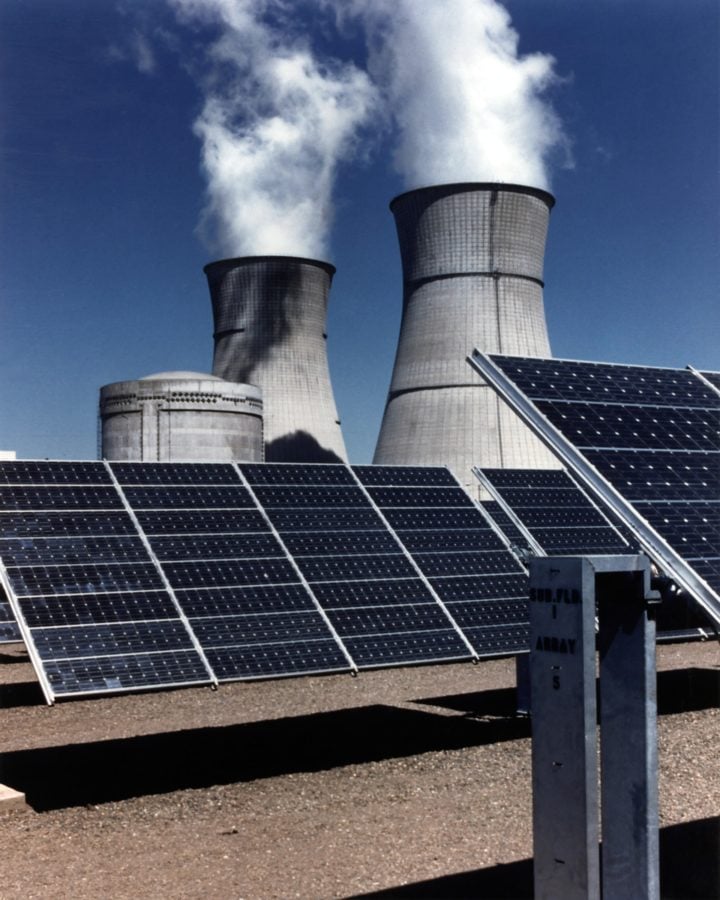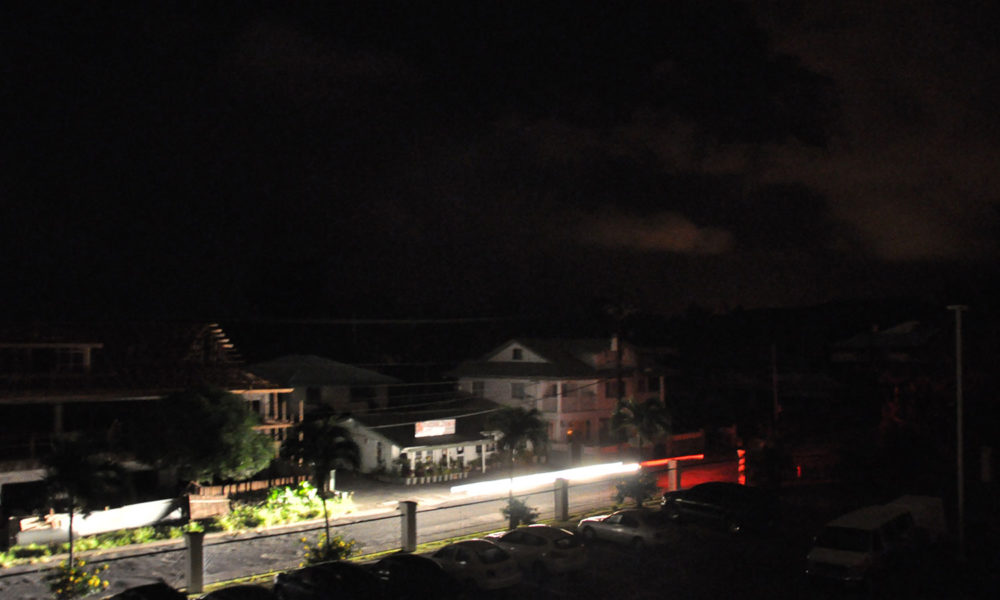In the midst of a global pandemic and a sweltering heatwave across the western United States, California experienced two consecutive days of rolling blackouts this past weekend.
These power outages are truly historic, but not for the usual reasons. They are not historic because they affected a large number of people, nor because they lasted a really long time. On the contrary, these outages were relatively well-contained, affecting only hundreds of thousands of Californians for only hours at a time.
Instead, California’s recent rolling blackouts are historic because of their cause: the power went out because there simply was not enough electricity to go around. Electricity supply shortages like this are extremely rare; the last time this happened in California was nearly two decades ago. Almost always, power outages are due to other causes.
Four types of power outages
There are many steps involved in delivering electricity to customers, and a power outage can be caused at any step along the way. First, power plants generate electricity. Then high voltage transmission lines move that electricity over long distances. Finally, the last leg of the journey happens on the distribution network, which delivers electricity to customers.
Power outages can happen because of failures at any point in that process: distribution failures, transmission failures, or insufficient electricity generation can all lead to power outages. More recently, a new type of power outage has emerged – caused by power companies intentionally shutting off portions of the transmission or distribution network to reduce the risk of triggering even more catastrophic outcomes.
Let’s dig in.

A power outage can be caused by a failure at any step in the process of delivering electricity. A shortage of generation (pictured in green and red), a failure in the transmission system (pictured in dark blue), or a failure in the distribution system (pictured in black) can all result in power outages.
Note: Microgrids (pictured in orange) can help protect against power outages, especially when the transmission or distribution system fails or is shut off intentionally.
1. Distribution failures
Distribution failures are the most common type of power outage, but they usually affect a relatively small area. This type of failure can happen due to many causes – stormy weather that blows a tree branch onto a power line, an adventurous squirrel going into parts of a substation where no squirrel has gone before (and lived to tell the tale), a car crashing into a power pole, a metallic balloon that has escaped the grip of its owner’s hands and touched a power line, the list goes on.

Utility workers repair a downed power line on the distribution system right outside my home.
Outages on the distribution system usually have a limited impact, affecting just a few blocks or a neighborhood. But sometimes these outages affect entire cities, and sometimes for long stretches of time. While the average U.S. electricity customer experiences roughly 1.3 outages and four hours without power each year, outages caused by severe weather can last much longer. For example, about 100,000 Florida electricity customers were without power for over a week when Hurricane Irma struck the state in September 2017.
Compared to the other types of power outages, distribution failures are the most common – most of the outages the average person experiences are due to problems with the distribution system.
2. Transmission failures
Transmission failures are much rarer than distribution failures, but when they happen, they can have huge consequences. Many transmission system failures are caused by weather, but this type of outage can also happen due to equipment failure, computer problems, and human error. In 2003, roughly 50 million people in the northeastern United States were left without power when a transmission line made contact with a tree branch. That disturbance spiraled out of control into a massive blackout due in large part to faulty computer systems. This is admittedly an extreme example, and the investigations that followed that incident ultimately led to the creation of new reliability standards designed to prevent similar outages from reoccurring.
Again, outages due to transmission failures are relatively rare. But because transmission systems are usually connected across many different states and even countries, transmission system failures can result in widespread power outages if not managed properly.

Transmission system failures rarely happen, but when they do, the impact can be very large.
3. Supply shortages
Supply shortages are perhaps the rarest type of outage of all. These outages happen when there is simply not enough electricity to meet demand. In most parts of the country, this type of outage is most likely to occur on the hottest summer days when people are blasting the air conditioning and electricity demand is at its peak. This is exactly what happened in California over the past few days: an extreme heatwave boosted electricity demand, resulting in supply shortages and rolling blackouts. Prior to the rolling blackouts this past weekend, the last time this type of outage happened in California was in the early 2000s. That series of outages in the 2000s, collectively known as the California Electricity Crisis, had multiple causes (including market manipulation!), but the bottom line is that there was not enough electricity to keep everyone’s lights on.

Supply shortages occur when there is not enough electricity generation to meet demand. This type of power outage is the rarest of them all.
Grid operators take many different actions to prevent outages when supply is short, but when worst comes to worst, rolling blackouts are the last resort. Rolling blackouts do not affect everyone – the grid operator chooses to turn off power only to a limited number of customers, which reduces electricity demand back down to manageable levels. While supply shortages occur across entire cities and states, the number of people affected by resulting outages can vary widely. For example, one of the outages during the California Electricity Crisis affected tens of thousands of people, while another outage affected millions of people.
This type of power outage is rare because we spend a lot of time and effort (and money!) trying to prevent them. In fact, national grid reliability standards dictate that this type of outage should happen only once every ten years.
Many parts of the country strive to meet this “once every ten years” standard through resource adequacy programs. These programs are designed to prevent power outages due to supply shortages by planning into the future to ensure we have enough power plants on the grid. In practice, we often end up going above and beyond this goal (i.e. we build more power plants than are necessary) which makes this type of outage extremely rare.
4. Public safety power shutoffs and planned outages
Public Safety Power Shutoffs (PSPS) and planned outages are either transmission or distribution outages, but the difference is that these outages are intentional.
In the case of planned outages, a utility might shut down certain portions of the grid in order to perform routine maintenance, but there is usually redundancy built into the electric grid that allows utilities to perform maintenance without shutting off the power.
On the other hand, public safety power shutoff events have been on the rise in California, where they are now utilities’ last resort in preventing wildfires sparked by transmission and distribution lines. In short, certain weather conditions (e.g. high winds and low humidity) can elevate the risk that transmission and distribution lines will start a fire. Rather than running the risk of starting a fire and being held responsible for the potential catastrophe that may ensue, utilities occasionally decide to shut off the power altogether to ensure their equipment does not start a fire. With climate change increasing wildfire risks across the western United States, California utilities are not the only ones implementing preemptive power shutoffs; for example, the Nevada utility NV Energy has also developed a program to mitigate wildfire risks with intentional power shutoffs.
Needless to say, intentionally shutting off the power for what can be extended periods – particularly to millions of people over multiple days – is simply unacceptable. Utilities can (must!) do better.
It’s not always that simple
In reality, power outages are not always that simple – they often have multiple causes and they do not always fit neatly into one of the four buckets above. For example, some of the world’s largest outages have been caused be a combination of generators being offline and transmission lines failing.
Regardless of the exact type of power outage, we live in a world where electricity has become essential to everyday life, and outages are almost always a massive disruption. To make matters worse, our faltering grid is struggling to keep up, with grid disruptions on the rise over the past few decades. And with even more devastating impacts of climate change (including killer heat) on the horizon, this problem will only get worse if we do not act now.
What can we do to prevent power outages?
For starters, we should make investments to increase grid resilience to prevent power outages from happening in the first place. Since transmission and distribution failures are the most common causes of power outages, we should take measures to harden transmission and distribution infrastructure to reduce the risk of these failures. Furthermore, we should also deploy distributed energy resources and microgrids that can reduce reliance on the transmission and distribution systems.

Distributed energy resources, such as residential solar, can reduce reliance on the transmission and distribution system.
However, even with all these grid resiliency measures, the power will still inevitably go out on occasion. And for those who cannot go without electricity (e.g. critical facilities and customers who use life-sustaining medical devices), there must be a backup plan. This is where microgrids for critical facilities and residential solar plus storage systems can play an essential role in building a resilient and equitable grid for the future.
In short, we should upgrade the grid.

